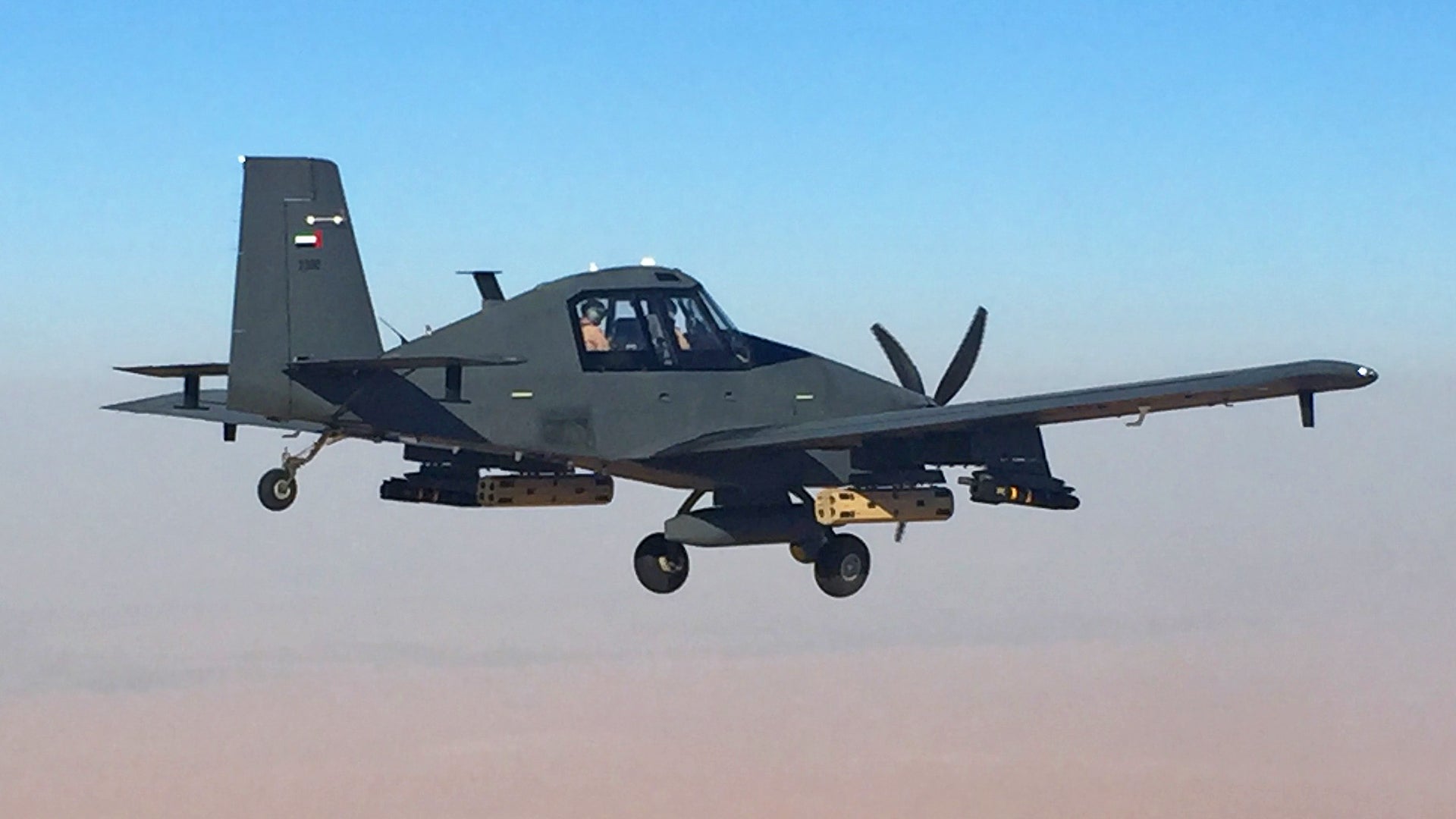A quiet but bloody war is raging on in Libya, and players from around the hemisphere continue to attempt a stabilization of what continues to be a very unstable situation. Some of these nations even have their own forward operating bases in Libya, including a secretive remote airfield operated by the United Arab Emirates and located about 50 miles southeast of Benghazi. Here, the UAE has deployed a pocket air force of heavily armed and armored agricultural planes developed into surveillance and light attack platforms–the AT-802U Border Patrol variant of the Air Tractor and the more capable IOMAX Archangel–in addition to S-70 Blackhawks, and Chinese Wing Loong unmanned aircraft, which are loosely analogous the General Atomics MQ-1 Predator.
Also check out more images of the base via Terraserver here. Make sure to pick the latest images by toggling the tab on the left hand side of the user interface window.
The base is austere, with satellite images showing no facilities there until early this year. Over the last few months there have been reports of AT-802Us being flown from somewhere in the country, likely by the UAE, one of the type’s major customers. There have even been reports of these aircraft orbiting over key locales, and flying low along certain roadways in the eastern part of the country. Now, with the base identified by IHS Janes, there is no doubt where these mysterious aircraft are coming from.
The UAE was one of China’s first export customers for the Wing Loong, having closed the deal in 2011. Since then the type has found another customer in nearby Saudi Arabia. Both the AT-802U and the Wing Loong have seen action in war in Yemen. In fact, the UAE has been training indigenous AT-802U pilots for duty in Yemen, donating some of their oldest variants of the AT-802U, the Border Patrol Variant (the more advanced Archangel is now in service), for the cause.

It is not clear if a similar program is underway in Libya, where the UAE backs the Libyan National Army. It’s not exactly in step with the fledgling UN supported government in Tripoli, but the group is active in fighting Islamic extremist elements, especially in the eastern part of the country. The Libyan National Army is known to have a small hodgepodge of an air force of its own, though it wouldn’t be equipped with the high-tech sensors or munitions of the AT-802U or Archangel.
In addition to the UAE, Turkey, Egypt and Qatar are active militarily in the Libya, as are a handful of European militaries and the US. Although American aircraft have been flying over the skies of Libya consistently since the beginning of coalition operations in that country in 2011, actual airstrikes have been sparse and mainly targeted against very high-value individuals. US special operations ground elements are clearly operating in Libya as well.

This summer the US waded back into the fight in a much more conventional manner, leveraging the amphibious assault ship USS Wasp’s embarked Aviation Combat Element (ACE) to strike extremist forces in and around the port city of Sirte. This operation is now being scaled back, with the Landing Platform Dock USS San Antonio (LPD-17)–the same ship that was attacked while transiting through the Strait of Mandeb two weeks ago–taking up station off Libya’s coast in place of the USS Wasp.
Whether it’s news of the UAE’s secretive air base in Libya, or America’s “Gator Navy” flying combat missions over Libyan shores, it’s a reminder that perpetual “low-intensity” warfare around the Middle East, Northern Africa and southwest Asia has become a miserable fact of life.

There are so many players in each conflict, and so many fragmented objectives motivating those players, that it seems almost impossible for any sort of peace to be obtained in the foreseeable future. This latest revelation regarding the forward deployment of elements of the UAE’s “lower tier” air force serves as another example of how militaries in the region and major power brokers abroad are arming themselves for two different conflicts, simultaneously developing a high-tech, high-end force for relatively quick and bloody conflicts with high stakes against peer-state competitors, while also fielding a simpler, much more affordable force in long-term irregular and counter-insurgency warfare. In other words, even small countries in the region can no longer afford a “one-size-fits-all” military. It is simply too expensive to sustain in combat for long periods of time.
In the end the only people who seem to truly win are the arms dealers.
Contact the author Tyler@thedrive.com
